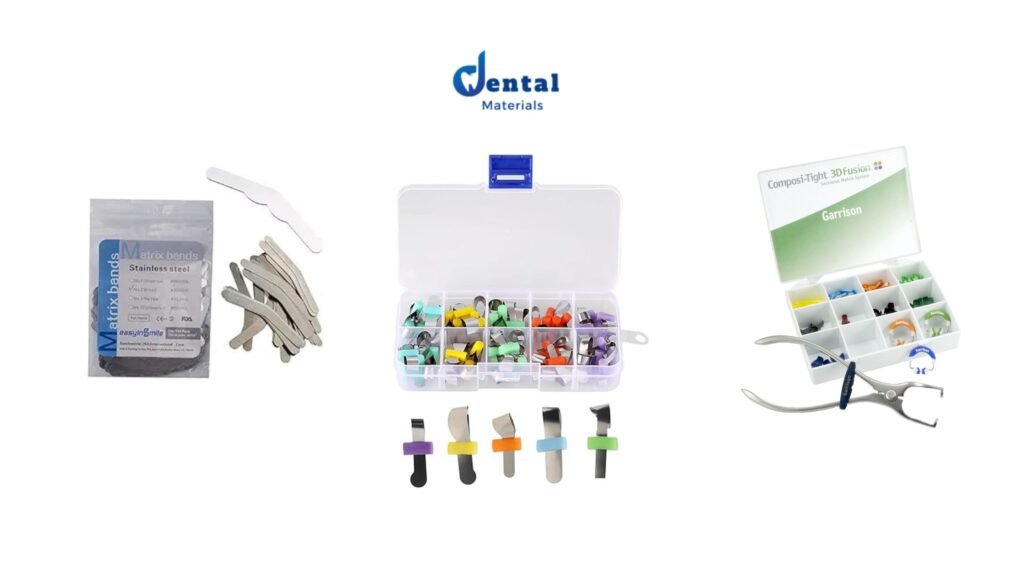A sectional matrix is a dental tool used in restorative dentistry to create a temporary wall or barrier around a tooth undergoing dental restoration. It is commonly used in procedures such as placing composite fillings.
The sectional matrix system typically includes a metal or plastic matrix band that is contoured to fit around the tooth being restored. The matrix band is usually flexible and can be shaped to match the anatomy of the tooth. It is held in place by a matrix retaining system, which may consist of a metal or plastic clamp or ring.
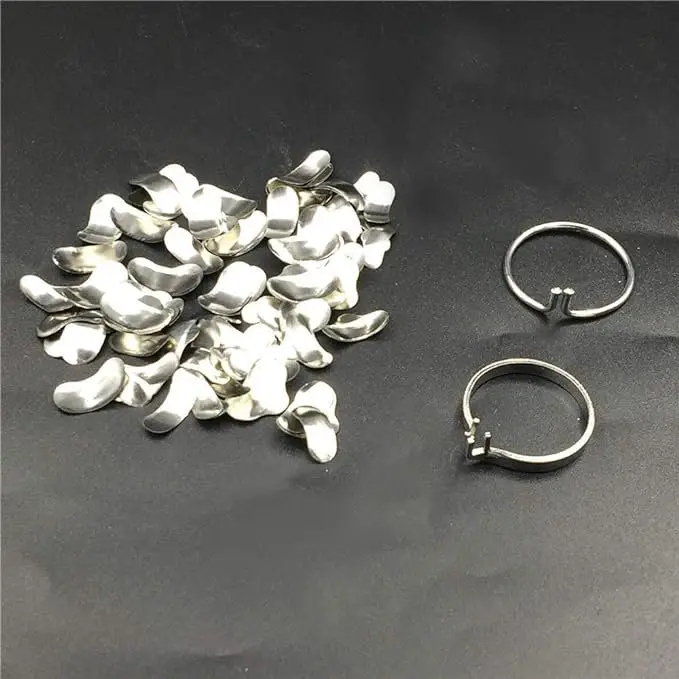
Why is it important?
The sectional matrix creates a temporary wall around the tooth, allowing the dentist to place and shape dental materials, such as composite resin, more accurately.
The purpose of a sectional matrix is to help recreate the natural contours and contact points of the tooth.
Here are some other benefits of using a matrix band system:
The use of sectional matrices in restorative dentistry offers several benefits:
- Maintained gingival health: Sectional matrices aid in establishing proper contact points between the restored tooth and adjacent teeth. This is crucial for maintaining the health of the gingiva (gums) and ensuring proper occlusion for functional and aesthetic purposes.
- Reduced Marginal Leakage: Properly contoured matrices contribute to the prevention of marginal leakage, which can occur when there are gaps between the tooth and the restoration. This helps in reducing the risk of recurrent decay and other complications.
- Enhanced Adaptation of Dental Materials: The use of sectional matrices improves the adaptation of dental materials, such as composite resin, to the tooth structure. This can lead to better marginal integrity and longevity of the restoration.
- Patient Comfort: Accurate contouring and proper contact points contribute to the overall comfort of the patient. Well-fitted restorations are less likely to cause food impaction, irritation, or interference with the patient’s bite.
When do we use it?
A matrix band is used in restorative dentistry to create a temporary barrier or wall around a tooth that is undergoing a restorative procedure. The primary purpose of a matrix band is to assist in the placement of dental restorations, such as composite fillings. Here are common situations in which a matrix band is used:
1- Class II Restorations:
- In Class II restorations, which involve the proximal surfaces of posterior teeth, a matrix band is essential for creating a well-defined wall that separates the tooth being restored from the adjacent tooth. This is crucial for achieving proper proximal contacts and preventing overhangs.
- Matrix bands are commonly used for restorations on posterior teeth (molars and premolars) where the anatomy and contours are more complex. They help in achieving accurate shaping and contouring of the restoration.
2- Diastema Closure:
- When closing a diastema (gap) between two teeth, a matrix band may be used to shape and guide the placement of dental material, ensuring a natural and esthetic result.
3- Build-Up Procedures:
- Matrix bands can be employed in build-up procedures where additional tooth structure is reconstructed, such as in cases of extensive tooth damage or after endodontic treatment.
- In cases where a tooth needs a crown, a matrix band may be used to assist in building up the core foundation of the tooth before the crown is placed.
4- Direct Veneers:
- For direct veneer procedures, where a thin layer of dental material is applied to the front surface of a tooth, a matrix band may be used to help shape and guide the placement of the veneer material.
5- Preventing Contamination:
- Matrix bands are useful in isolating the tooth and preventing contamination from saliva and other fluids during the restoration procedure. This is especially important when working with materials that require a dry environment for optimal adhesion and performance.
Systems available
There are several sectional matrix systems available in the field of restorative dentistry. Some well-known sectional matrix systems include:
Palodent Plus:
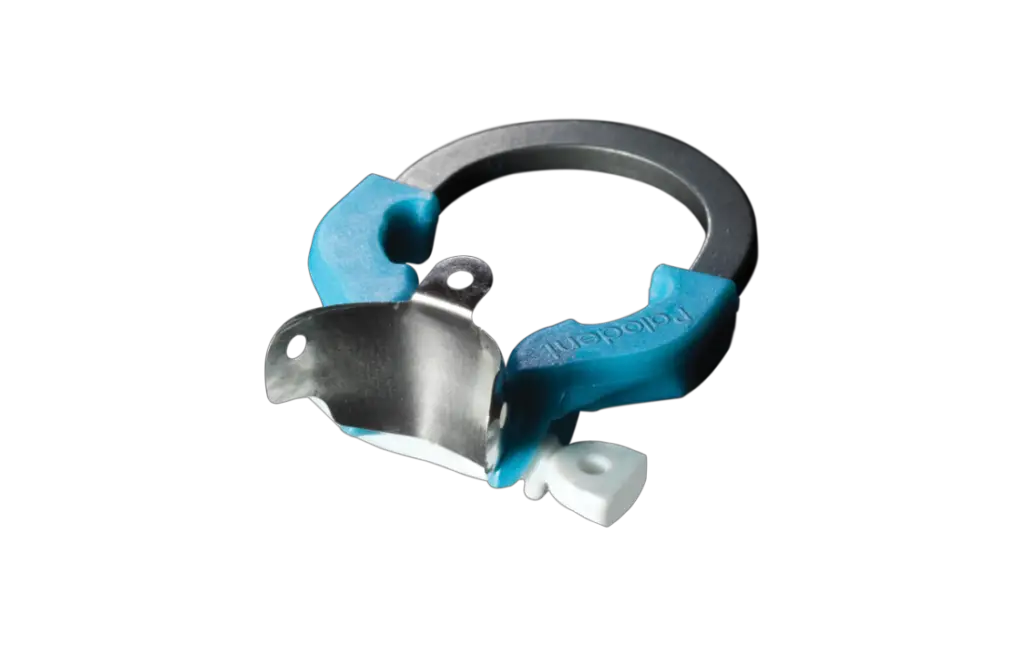
- Manufactured by Dentsply Sirona, Palodent Plus is a popular sectional matrix system that includes components for achieving tight contacts and accurate restorations.
Composi-Tight 3D Fusion:

- Garrison Dental Solutions produces the Composi-Tight 3D Fusion system, which is designed to create natural-looking and well-contoured restorations.
Tofflemire Retainer System:
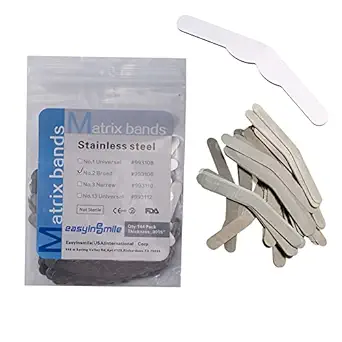
- While not a sectional matrix system per se, the Tofflemire retainer is a classic matrix system that is still widely used. It consists of a metal retainer and a matrix band that can be contoured to the tooth.
Automatrix:
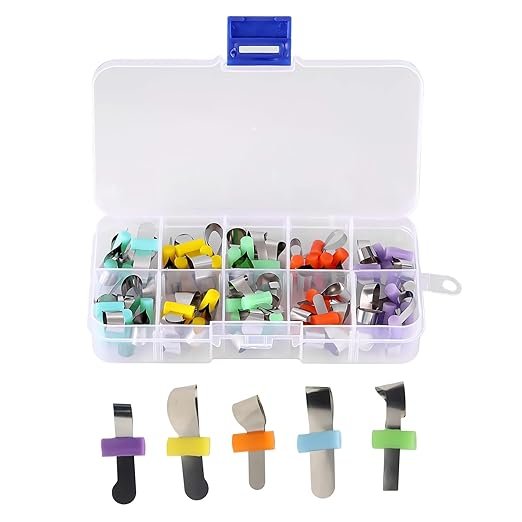
- The Automatrix system by Dentsply Sirona is designed to simplify the matrix application process. It includes a disposable matrix band, a retainer, and a wedge.
It’s important to note that the choice of sectional matrix system may depend on the dentist’s preference, the specific clinical situation, and the type of restoration being performed.
Checking with dental supply companies, attending dental conferences, and consulting with peers are good ways to stay updated on the latest sectional matrix systems and technologies.
How to apply it?
1- Select the Appropriate Matrix Band:
- Choose a matrix band that matches the size and shape of the tooth to be restored. Matrix bands come in various sizes and contours to accommodate different teeth.
2- Prepare the Tooth:
- Ensure that the tooth to be restored is clean and free of debris. If necessary, remove any existing restorations or decay.
3- Select the Matrix Retainer:
- Choose a matrix retainer or clamp that corresponds to the matrix band. Matrix retainers come in different designs and are used to secure the matrix band around the tooth.
4- Place the Matrix Band:
- Insert the matrix band into the retainer, ensuring that the band is properly seated and conforms to the shape of the tooth. The band should encircle the tooth, extending slightly below the gingival margin.
5- Position the Matrix Retainer:
- Place the matrix retainer with the matrix band around the tooth. The retainer should engage with the matrix band and hold it securely in place. Make sure the retainer is correctly positioned to provide proper tension on the matrix band.
6- Secure the Matrix Retainer:
- Use an appropriate instrument to secure the matrix retainer in place. This may involve tightening a screw or using a locking mechanism, depending on the design of the retainer.
7- Check Contact Points:
- Verify that the matrix band creates proper contact points with adjacent teeth. Adjust the band if necessary to achieve the desired proximal contact.
8- Adjust Matrix Band Contour:
- Shape the matrix band to closely match the natural contour of the tooth. This is important for achieving an accurate and anatomically correct restoration.
9- Proceed with Restoration:
- With the matrix band in place, proceed with the placement and shaping of the dental restoration material, such as composite resin. The matrix band helps in confining the material and creating a well-contoured restoration.

